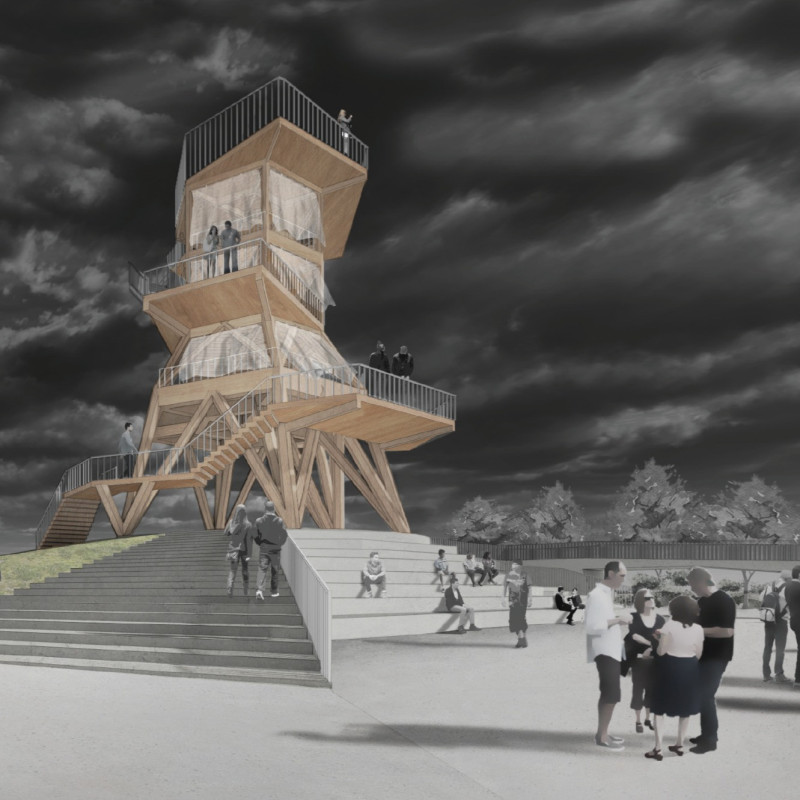5 key facts about this project
At the mouth of the Hoquiam River in Washington, the Hoquiam Pavilion stands out as a key feature of the area. It serves as both a recreational space and a protective structure against potential tsunamis and flooding. The design not only meets safety needs but also encourages community interaction. Its concept aligns with the local environment and reflects the region's historical ties to timber, addressing the specific challenges faced by the community.
Design Concept
The pavilion is designed in the form of a tower, positioned on the southern edge of an artificial hill that acts as a levee. This location allows the structure to provide important views of the surrounding area while offering protection to those in low-lying regions. The tower's height creates an upward connection to the sky, enhancing the relationship between the building and its natural surroundings.
Functional Elements
Multiple levels are incorporated into the design to cater to various community activities. These spaces are intended for gatherings and performances, increasing possibilities for local engagement. A ramp made of tsunami-resistant concrete connects the different levels, allowing for easy and safe access. This feature integrates practical safety measures into the overall design and supports the building's role as a refuge.
Material Selection
The primary material used for the pavilion is timber, which aligns with the historical significance of Hoquiam as a center of lumber production. This choice reflects the local heritage while providing structural integrity. The ramp's use of tsunami-resistant concrete is a thoughtful response to the area’s environmental risks. Together, these materials create a resilient structure that fits well within its natural and historical context.
Community Integration
By transforming a previously underused brownfield into an active park, the pavilion promotes public access to recreational areas. This change reconnects the community to its landscape. The structure not only offers a safe place to gather but also serves as a stage for cultural activities, contributing to the social fabric of Hoquiam.
The pavilion concludes with an outdoor performance space that extends from the main structure, encouraging community members to engage with their environment. This design detail enhances the experience and highlights the importance of gathering in this shared local space.



















































